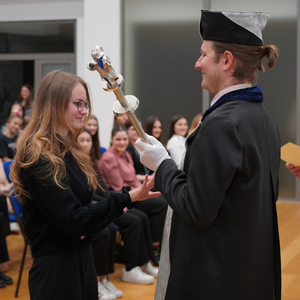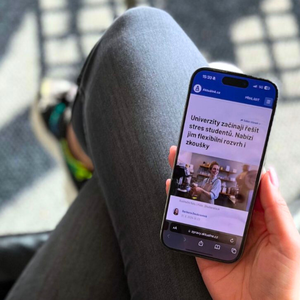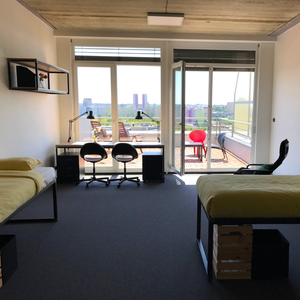Arrival in Prague
There are several ways how you can get to our capital city. Choose you mean of transport according to your preferences and of course distance – for comparison of transport you can use this useful tool.
By plane
The main international airport in the Czech Republic is Václav Havel Airport Prague (PRG), which has daily connections to/from major European cities. Passengers going to/from other destinations will have to change planes in Frankfurt, London, Amsterdam or Paris. Václav Havel airport is located on the northwest edge of Prague, about 15 km from the city centre.
In case nobody is waiting for you at the airport, there are some comfy and not very difficult ways to get down town.
Public Transport
Taking the bus like any other Prague inhabitant may not be the most comfortable, but is definitely the cheapest way to get around.
The stations of the two buses (119 and 100) that will take you for the metro and then to the centre are just in front of the Arrival Hall. Bus No 119 is most commonly used to get to the centre, as it goes to the metro station Nádraží Veleslavín, from where you can get to any place from the historical centre in just a few minutes. Bus No 100 takes you to the metro station Zličín (yellow line B), from where it will take you about 20 extra minutes to get down town. For further info about tickets and timetables see Public Transport.
Shuttle Bus
Airport Express runs every 15 - 30 minutes from 6:00 to 22:20 from the airport to the Main Railway Station (Hlavní nádraží) (red line C). It is a direct bus, so it may be in some cases a more comfortable way to travel than the public transportation bus. You can find them in front of the Arrivals hall - Terminal 1 and Terminal 2, or get information from the info desk at the Arrival hall. A normal ride costs 60 CZK (2.40 EUR) per person.
Taxi
Taxi is the most comfortable, yet expensive way to get wherever you need. The cost of a ride to the centre is in the range between 400 CZK - 800 CZK (approximately 16 - 32 EUR). In order to avoid any unpleasant situation that might occur, we recommend using some registered reliable taxi service companies.
By Railway
Domestic services are provided by České dráhy (Czech Railways), RegioJet and Leo Express. There are number of daily connections to Prague from major European cities.
Prague has several train stations, but if you are using an international train you will most probably get off at the Main Railway Station (Hlavní nádraží), which is connected by metro (red line C) to the rest of the city. Other train stations in Prague: nádraží Holešovice, Smíchovské nádraží, Masarykovo nádraží, nádraží Vysočany, nádraží Libeň.
The biggest and busiest is the Main Railway Station (Hlavní nádraží), an international rail road hub, where you will find a 24-hour left-luggage service, information desks, exchange offices, food stalls and booking offices. The Main station is situated basically in the centre of Prague, just 5 minutes away from Wenceslas Square (Václavské náměstí) and other places of interest. It is also well connected to the rest of the city by public transport, that is by metro (red line C) and trams.
It is possible to buy train tickets (jízdenka) or tickets with reservation (místenka) for a seat, couchette or sleeper.
Information on rail connections available at:
By Bus
If you chose to travel to Prague by international coach/bus, you will most probably arrive in Florenc, Prague international bus terminal. The bus terminal is situated in the centre (historical part of Prague, called "Nové město" - New Town), close to most hotels and other accommodation places. Means of transportation from Florenc:
- on foot – depending on how well you know Prague, how much luggage you have or how far your hotel or place of interest is,
- by public transport – Bus Terminal Florenc is located at the metro (yellow line B/red line C) and tram station Florenc,
- taxi – depending on the comfort you prefer and how much you are prepared to spend in Prague. Taxi cabs can be found just in front of the bus terminal.
Information on coach connections available at:
By Car
Prague has a fairly good road infrastructure, yet this does not mean traffic jams or problems with finding a parking place do not occur. Also break-ins or vehicle thefts are not excluded. This is why it is mostly advisable to leave your car in safe parking lots that is in guarded parking places, even if they can be fairly expensive, especially in places close to the city centre.
If you ignored a „No Parking“ sign and you cannot see your car anywhere, it could mean that your car has been towed away or, more dramatically, stolen. In order to get the mystery elucidated, call 158 or 156 and a police officer will tell you, where you have to go to pay the fine and get your car back (that is, if indeed it has been just towed away), or will help you declare the theft.
If you find your car clamped, you should call the police at the phone No. stated on the bill you find on your windscreen and wait for a police man to come. After paying the fine, the clamp will be removed and you can go. A simple solution to save you from all this trouble would be to Safe Park somewhere further from the centre and use the public transport service. It is cheaper, less stressful and sometimes even faster (e.g. weekday mornings about 8 am, when everybody goes to work).
The Czech Republic has a network of motorways and roads that are moderately well marked. It is necessary to buy and display the obligatory motorway sticker when driving on the Czech highways. Stickers can be purchased at post offices, border crossings, and selected petrol stations.
The Czech traffic regulations are similar to those in effect in other EU member states. A few basic rules are:
- The maximum allowable speed in towns and villages is 50 km/h (nights included),
- The maximum allowable speed for cars and buses of up to 3,500 kg is 90 km/h on roads and 130 km/h on highways,
- The maximum allowable speed for motorcycles is 90 km/h,
- No consumption of alcohol at all is allowed before or during driving,
- Seat belts must be fastened during the entire journey (driver and all passengers),
- Motorcyclists and their side-car passengers must wear helmets,
- Lights must be switched on all day in all seasons of the year.








